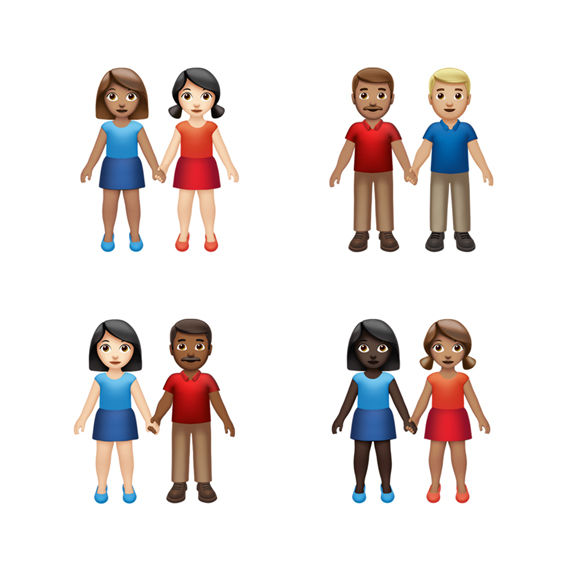Newly released emojis include disabled and gender-inclusive options
November 3, 2019
Apple has released new emojis featuring gender-neutral characters and people with disabilities as part of its latest iOS software.
Back in July, Apple announced it would be releasing over 350 new emoji designs, and last week they were released as part of the iOS 13.2 update.
“In a major update to the ‘Holding Hands’ emoji typically used to represent couples and relationships, users will now be able to select any combination of skin tone, in addition to gender, to personalize the people holding hands, opening up more than 75 possible combinations,” according to the Apple website.
This uses a brand new type of interface where the skin tones are selected for the left and right people one at a time.
Following Apple’s proposal to the Unicode Consortium last year to introduce more disability-themed emojis, a guide dog, an ear with a hearing aid, wheelchairs, a prosthetic arm and a prosthetic leg are now available in the emoji keyboard.
“Celebrating diversity in all its many forms is integral to Apple’s values and these new options help fill a significant gap in the emoji keyboard,” according to the Apple website.
Another large change in this release is the addition of a gender-inclusive option to the majority of human emojis.
Now on the iOS emoji keyboard, a choice of three options is available: woman, person or man.
Unlike other implementations, Apple’s gender options are not contained within a submenu on the emoji keyboard and are instead shown side by side on the top level.
This means a gender-inclusive office worker, singer, vampire or merperson can now be sent, alongside the previous options available for women or men.
Many additional emoji categories are getting updates, such as a new smiley face for yawning, a one-piece swimsuit, new food items including a waffle, falafel, butter and garlic and new animals like a sloth, flamingo, orangutan and skunk.
The new emoji designs are available with a free software update for iPhone, iPad, Mac and Apple Watch.
New emojis are created based on the approved characters in Unicode 12.0.
Unicode 12.0 adds 554 characters, for a total of 137,928 characters. These additions include four new scripts, for a total of 150 scripts, as well as 61 new emoji characters.
The new scripts and characters in Version 12.0 add support for lesser-used languages and unique written requirements worldwide.
The new scripts and characters include Elymaic, historically used to write Achaemenid Aramaic in the southwestern portion of modern-day Iran; Nandinagari, historically used to write Sanskrit and Kannada in southern India; Nyiakeng Puachue Hmong, used to write modern White Hmong and Green Hmong languages in Laos, Thailand, Vietnam, France, Australia, Canada and the United States; Wancho, used to write the modern Wancho language in India, Myanmar and Bhutan; and Miao script additions to write several Miao and Yi dialects in China.
Additional support for lesser-used languages and scholarly work was extended worldwide, including Hiragana and Katakana small letters, used to write archaic Japanese; Tamil historic fractions and symbols, used in South India; Lao letters, used to write Pali; Latin letters used in Egyptological and Ugaritic transliteration; and hieroglyph format controls, enabling full formatting of quadrats for Egyptian hieroglyphs.







